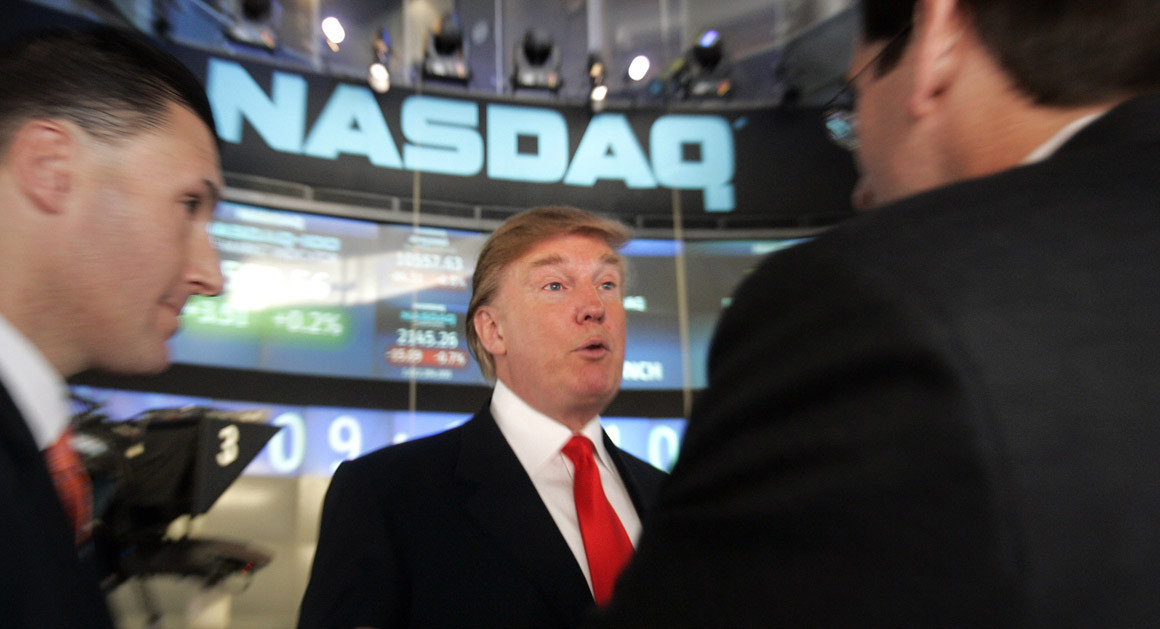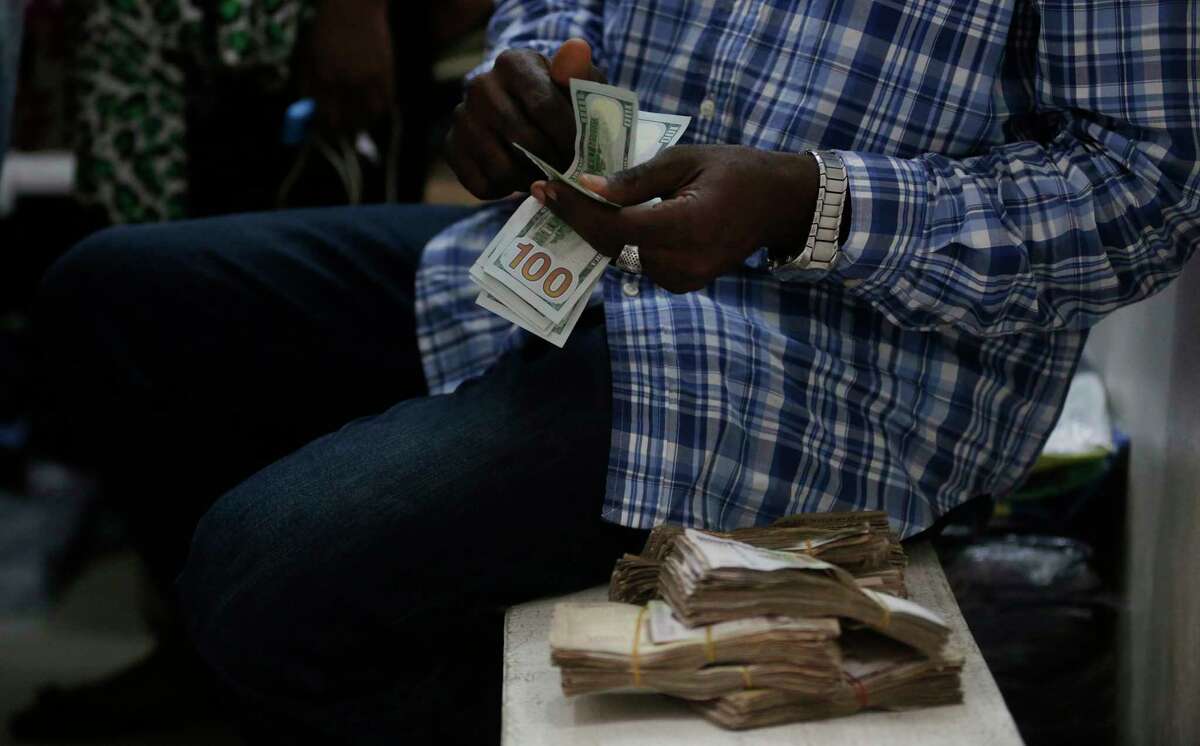Economy
Escalating Trade Dispute May Lead to Pullback on Wall Street

By Investors Hub
The major U.S. index futures are currently pointing to a lower opening on Friday, with stocks likely to move back to the downside following the attempted recovery from an early sell-off in the previous session.
Concerns about the economic impact of an escalating trade dispute between the U.S. and China may weigh on the markets after the U.S. raised tariffs on Chinese imports.
The U.S. hiked the tariff on $250 billion worth of Chinese goods from 10 percent to 25 percent after the U.S. and China failed to reach a trade deal by a midnight deadline.
President Donald Trump noted in a post on Twitter that the process has begun to place tariffs on the remaining $325 billion worth of Chinese imports.
Trump praised the massive tariff payments to the U.S. Treasury and said there is ?absolutely no rush? to reach a trade agreement with China.
?Tariffs will bring in FAR MORE wealth to our Country than even a phenomenal deal of the traditional kind. Also, much easier & quicker to do,? Trump tweeted.
?Tariffs will make our Country MUCH STRONGER, not weaker. Just sit back and watch!? he added. ?In the meantime, China should not renegotiate deals with the U.S. at the last minute. This is not the Obama Administration, or the Administration of Sleepy Joe, who let China get away with ?murder!??
After falling sharply early in the session, stocks regained ground over the course of the trading day on Thursday but still closed mostly lower. Reaction to comments from Trump was the main driver of trading on the day.
The major averages finished the session in negative territory but well off their worst levels of the day. The Dow slid 138.97 points or 0.5 percent to 25,828.36, the Nasdaq fell 32.73 points or 0.4 percent to 7,910.59 and the S&P 500 slipped 8.70 points or 0.3 percent to 2,870.72.
The initial sell-off on Wall Street came amid renewed trade concerns following tough talk from Trump ahead of two days of U.S.-China trade talks in Washington.
Trump claimed during a rally in Florida on Wednesday that the U.S. is planning to raise tariffs on Chinese goods because China “broke the deal.”
“So they’re flying in, the vice premier tomorrow is flying in ? good man ? but they broke the deal,” Trump told his supporters. “They can’t do that, so they’ll be paying.”
However, stocks staged a recovery attempt after Trump told reporters at the White House a trade deal with China is still possible.
Trump indicated he has set a midnight deadline to reach a trade agreement, calling raising tariffs an “excellent” alternative.
Analysts have previously urged investors to focus on Trump’s actions rather than his words, suggesting the president’s bluster is merely a negotiating tactic.
On the U.S. economic front, the Commerce Department released a report showing the U.S. trade deficit widened in the month of March.
The report said the trade deficit widened to $50.0 billion in March from a revised $49.3 billion in February. Economists had expected the deficit to widen to $50.2 billion.
The wider trade deficit came as the value of imports surged up by 1.1 percent to $262.0 billion compared to a 1.0 percent jump in the value of exports to $212.0 billion.
The Labor Department also released a report showing producer prices increased in line with economist estimates in the month of April.
The report said producer price index for final demand rose by 0.2 percent in April after climbing by 0.6 percent in March. The uptick in prices matched expectations.
Excluding food and energy prices, core producer prices inched up by 0.1 percent in April after rising by 0.3 percent in March. Economists had expected core prices to edge up by 0.2 percent.
A separate Labor Department report showed first-time claims for U.S. unemployment benefits pulled back by less than expected in the week ended May 4th.
The Labor Department said initial jobless claims dipped to 228,000, a decrease of 2,000 from the previous week’s unrevised level of 230,000. Economists had expected jobless claims to drop to 220,000.
Despite the recovery attempt by the broader markets, significant weakness remained visible among networking stocks.
The NYSE Arca Networking Index regained ground after hitting its worst intraday level in well over a month but still ended the day down by 2.2 percent.
Considerable weakness also remained visible among semiconductor stocks, as reflected by the 1.2 percent loss posted by the Philadelphia Semiconductor Index.
Intel (INTC) plunged by 5.3 percent after BMO Capital downgraded its rating on the semiconductor giant to Market Perform from Outperform.
Gold, chemical, and computer hardware stocks also ended the day notably lower, while most of the other major sectors showed more modest moves.
Economy
Customs Street Chalks up 1.08% on Renewed Buying Pressure

By Dipo Olowookere
A 1.08 per cent growth was further printed by the Nigerian Exchange (NGX) Limited on Friday on improved appetite for Nigerian stocks.
Data showed that the insurance sector lost 0.61 per cent yesterday due to profit-taking as the energy space gave up 0.08 per cent, while the commodity counter closed flat.
However, the industrial goods landscape appreciated by 2.06 per cent, the banking index improved by 1.31 per cent, and the consumer goods sector expanded by 0.83 per cent.
At the close of business on Customs Street, the All-Share Index (ASI) increased by 1,563.92 points to 147,040.07 points from 145,476.15 points and the market capitalisation went up by N996 billion to N93.722 trillion from N92.726 trillion.
UAC Nigeria led the advancers’ log yesterday after it grew by 10.00 per cent to N96.80, Transcorp Hotels jumped by 9.71 per cent to N172.80, Royal Exchange appreciated by 8.89 per cent to N1.96, Ikeja Hotel soared by 8.74 per cent to N31.10, and Veritas Kapital leapt by 8.07 per cent to N1.74.
On the flip side, Union Dicon declined by 10.00 per cent to N6.30, ABC Transport slipped by 9.88 per cent to N3.10, AXA Mansard depreciated by 7.19 per cent to N12.90, FTN Cocoa lost 4.62 per cent to trade at N4.75, and Guinea Insurance dropped 3.36 per cent to finish at N1.15.
A total of 38 stocks ended on the gainers’ table and 17 stocks finished on the losers’ table, representing a positive market breadth index and strong investor sentiment.
Traders transacted 361.6 million equities for N14.8 billion in 21,051 deals yesterday versus the 1.9 billion equities worth N19.2 billion traded in 23,369 deals a day earlier, showing a decline in the trading volume, value, and number of deals by 80.97 per cent, 22.92 per cent, and 14.20 per cent, respectively.
The busiest stock for the session was Zenith Bank with 59.5 million units worth N3.6 billion, Access Holdings traded 46.1 million units valued at N973.0 million, Fidelity Bank exchanged 29.4 million units for N560.4 million, FCMB transacted 27.9 million units worth N293.9 million, and Tantalizers sold 13.0 million units valued at N29.8 million.
Economy
Nipco, 11 Plc Crash OTC Securities Exchange by 4.76%

By Adedapo Adesanya
Energy stocks influenced the 4.76 per cent loss recorded by the NASD Over-the-Counter (OTC) Securities Exchange on Friday, December 5.
The culprits were the duo of 11 Plc and Nipco Plc,with the former shedding N32.17 to end at N291.83 per share compared with the previous day’s N324.00 per share, and the latter down by N21.00 to sell at N195.00 per unit versus the previous session’s N216.00 per unit.
Consequently, the NASD Unlisted Security Index (NSI) slumped by 170.16 points to 3,401.37 points from 3,571.53 points and the market capitalisation lost N101.81 billion to close at N2.035 billion from the N2.136 trillion quoted in the preceding session.
The OTC securities exchange suffered the decline yesterday despite the share prices of three companies closing green.
Central Securities Clearing System (CSCS) Plc was up by N1.80 to close at N39.80 per share compared with Thursday’s price of N38.00 per share, Air Liquide Plc appreciated by N1.09 to N11.99 per unit from N10.90 per unit, and FrieslandCampina Wamco Nigeria Plc grew by 78 Kobo to N56.57 per share from N55.79 per share.
During the session, the volume of transactions rose by 6,885.3 per cent to 18.2 million units from 4.3 million units, the value of transactions ballooned by 10,301.7 per cent to N389.7 million from N347.2 million, but the number of deals declined by 29.7 per cent to 26 deals from 37 deals.
Infrastructure Credit Guarantee Company (InfraCredit) Plc ended the day as the most traded stock by value on a year-to-date basis with 5.8 billion units worth N16.4 billion, followed by Okitipupa Plc with 170.4 million units valued at N8.0 billion, and Air Liquide Plc with 507.5 million units worth N4.2 billion.
InfraCredit Plc also finished the day as the most traded stock by volume on a year-to-date basis with 5.8 billion units transacted for N16.4 billion, followed by Industrial and General Insurance (IGI) Plc with 1.2 billion units sold for N420.2 million, and Impresit Bakolori Plc with 536.9 million units worth N524.9 million.
Economy
Naira Depreciates to N1,450/$1 at Official Forex Market

By Adedapo Adesanya
The Naira depreciated further against the US Dollar in the Nigerian Autonomous Foreign Exchange Market (NAFEX) on Friday, December 5, as FX demand pressure mounts.
The Nigerian currency lost N2.60 or 0.18 per cent against the greenback to close at N1,450.43/$1 compared with the previous day’s N1,447.83/$1.
Equally, the domestic currency declined against the Pound Sterling in the official forex market during the session by N4.48 to trade at N1,935.45/£1, in contrast to Thursday’s closing price of N1,930.97/£1 and shrank against the Euro by 43 Kobo to end at N1,689.17/€1 versus the preceding session’s rate of N1,688.74/€1.
Similarly, the local currency performed badly against the US Dollar at the GTBank FX counter by N2 to close at N1,455/$1 versus Thursday’s N1,453/$1 but traded flat at the parallel market at N14.65/$1.
As the country gets into the festive period, pressure mounted on the local currency reflecting higher foreign payments and lower FX inflows.
However, there are expectations that the Nigerian currency will be stable, supported by interventions by to the Central Bank of Nigeria (CBN) in the face of steady dollar Demand and inflows from Detty December festivities that will give the Naira a boost after it depreciated mildly last month.
Traders cited by Reuters expect that the Naira will trade within a band of N1,443-N1,450/$1 next week, buoyed by improved FX interventions by the apex bank.
As for the crypto market, it was down yesterday due to profit-taking associated with year-end trading. However, the December 1-Year Consumer Inflation Expectation by the University of Michigan fell to 4.1 per cent from 4.5 per cent previously and 4.5 per cent expected. The 5-Year Consumer Inflation Expectation fell to 3.2 per cent from 3.4 per cent previously and 3.4 per cent expected.
With the dearth of official economic data of late, these private surveys have taken on a new level of significance and the market banks of them to make decisions.
Cardano (ADA) depreciated by 5.7 per cent to $0.4142, Dogecoin (DOGE) slid by 5.1 per cent to $0.1394, Ethereum (ETH) dropped by 3.9 per cent to $3,039.75, Solana (SOL) declined by 3.8 per cent to $133.24, and Litecoin (LTC) fell by 3.7 per cent to $80.59.
Further, Bitcoin (BTC) went down by 2.6 per cent to sell at $89,683.72, Binance Coin (BNB) slumped by 2.2 per cent to $883.59, and Ripple (XRP) shrank by 2.1 per cent to $2.04, while the US Dollar Tether (USDT) and the US Dollar Coin (USDC) remained unchanged at $1.00 each.
-

 Feature/OPED6 years ago
Feature/OPED6 years agoDavos was Different this year
-
Travel/Tourism9 years ago
Lagos Seals Western Lodge Hotel In Ikorodu
-

 Showbiz3 years ago
Showbiz3 years agoEstranged Lover Releases Videos of Empress Njamah Bathing
-

 Banking7 years ago
Banking7 years agoSort Codes of GTBank Branches in Nigeria
-

 Economy3 years ago
Economy3 years agoSubsidy Removal: CNG at N130 Per Litre Cheaper Than Petrol—IPMAN
-

 Banking3 years ago
Banking3 years agoFirst Bank Announces Planned Downtime
-

 Banking3 years ago
Banking3 years agoSort Codes of UBA Branches in Nigeria
-

 Sports3 years ago
Sports3 years agoHighest Paid Nigerian Footballer – How Much Do Nigerian Footballers Earn











